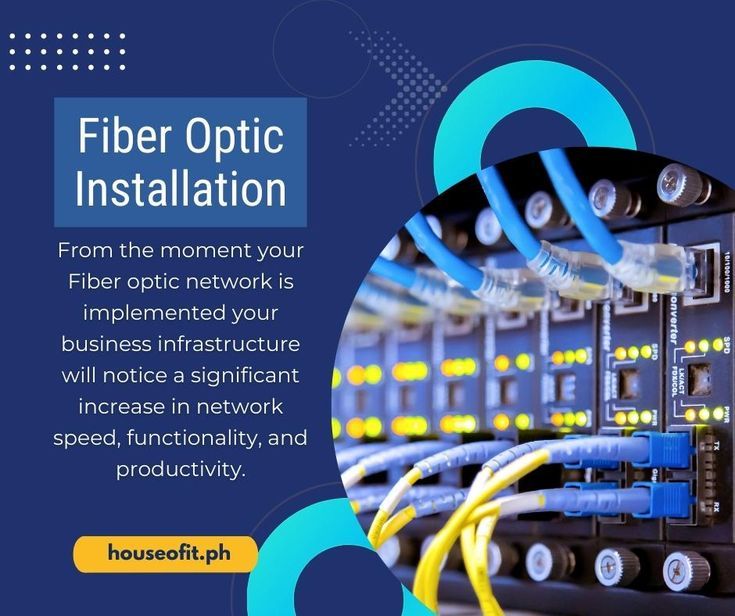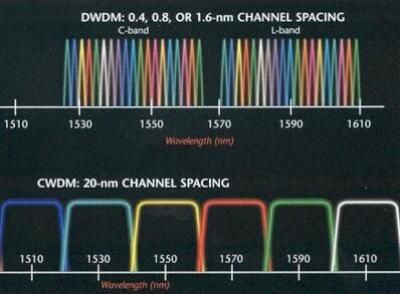Module 6: Advancements in fiber optic backbone network
Fiber optic backbone network: In an era driven by the relentless pursuit of faster and more reliable communication, optical fiber networks have emerged as the undisputed backbone of modern telecommunications. These intricate networks of thin glass or plastic fibers, designed to transmit data using light signals, have revolutionized the way we connect, communicate, and share information.
Optical fiber networks have played a pivotal role in shaping the digital age, enabling everything from high-speed internet access to long-distance telephony and data transmission.
In this article, we will explore the fascinating world of optical fiber networks, delving into their history, components, working principles, and the latest advancements that are propelling them into an even more prominent role in the digital landscape.
A Brief History of fiber optic backbone network
The concept of transmitting information through light dates back to ancient civilizations, but it wasn’t until the 19th and 20th centuries that significant breakthroughs paved the way for modern optical fiber networks. The development of fiber optics began with the invention of the optical telegraph and continued through innovations in materials and signal transmission. Notable milestones include the work of John Tyndall in the 19th century and the invention of the laser in the 20th century.
Components of Optical Fiber Networks
Before we dive into the inner workings of optical fiber networks, it’s essential to understand the key components that make these systems possible. This chapter will explore the following elements:
Optical Fiber Cables:
The fundamental building blocks of optical networks, these cables consist of a core, cladding, and protective outer layers. We’ll examine the types of fiber cables, their materials, and their construction.
Light Sources:
Optical fiber networks rely on various light sources, with laser diodes and light-emitting diodes (LEDs) being the most common. We’ll discuss the advantages and disadvantages of each and their applications.
Optical Receivers:
These devices convert incoming light signals back into electrical signals for processing. We’ll delve into the working principles of optical receivers and their role in the network.
Connectors and Splices:
Ensuring a seamless connection between optical fibers is crucial. We’ll explore the different types of connectors and splicing techniques used in optical networks.
How Optical Fiber Networks Work
This chapter will provide a comprehensive overview of the working principles behind optical fiber networks. We’ll cover the following key concepts:
Total Internal Reflection:
The phenomenon that allows light to bounce off the inner walls of the optical fiber, ensuring minimal signal loss during transmission.
Modulation and Demodulation:
How data is encoded onto light signals and then decoded at the receiving end.
Multiplexing:
Techniques like wavelength division multiplexing (WDM) that enable multiple signals to travel simultaneously through a single optical fiber.
Signal Amplification:
The need for signal amplification over long distances and the role of optical amplifiers.
Applications of Optical Fiber Networks
Optical fiber networks are ubiquitous in modern society and play a vital role in various industries. In this chapter, we’ll explore their diverse applications, including:
Telecommunications:
The backbone of long-distance communication, including voice, video, and data transmission.
Internet Connectivity:
How optical fiber networks enable high-speed broadband internet access.
Cable Television:
The role of fiber-optic cables in delivering high-definition TV signals.
Medical Imaging:
How optical fibers are used in endoscopy and medical imaging technologies.
Military and Aerospace:
The use of optical fibers in secure and high-speed data transmission for defense and space exploration.

Industrial and Research Applications:
Optical fiber networks in industrial automation, research laboratories, and more.
Advancements in Optical Fiber Networks
The world of optical fiber networks is constantly evolving, driven by the need for faster speeds, greater capacity, and enhanced reliability. This chapter will explore recent advancements in the field, including:
5G and Beyond:
How optical fiber networks are crucial for supporting the next generation of wireless communication.
Fiber to the Home (FTTH):
The expansion of optical fiber networks to residential areas for gigabit-speed internet access.
Quantum Communication:
The potential of optical fibers in enabling quantum encryption for secure communications.
Nonlinear Optical Effects:
Utilizing nonlinear properties of optical fibers for advanced signal processing.
Space-Based Optical Communication:
Optical networks in space for high-speed data transmission between satellites and Earth.
Challenges and Future Prospects
Whilefiber optic backbone network have come a long way, they still face challenges and limitations. In this chapter, we’ll discuss issues such as signal attenuation, network security, and the environmental impact of fiber optic cables. Additionally, we’ll explore the future prospects of optical fiber networks, including advancements in materials, technologies, and their role in shaping the digital society of tomorrow.
fiber optic backbone network management software
Fiber optic network management software is a critical component in the efficient operation, monitoring, and maintenance of optical fiber networks. These software solutions are designed to streamline network management tasks, improve performance, enhance security, and facilitate troubleshooting. In this article, we’ll explore the key features and benefits of fiber optic network management software and discuss some popular options available in the market,
Key Features of Fiber Optic Network Management Software:
- Inventory Management: Fiber optic network management software allows network administrators to maintain a detailed inventory of all network components, including fiber cables, connectors, splices, and active equipment such as switches and routers. This information is crucial for planning and maintenance.
- Performance Monitoring: Real-time monitoring of network performance is vital for ensuring optimal operation. These software tools track various network parameters, including signal strength, bandwidth utilization, latency, and packet loss.
- Fault Detection and Analysis: Network management software can identify and alert administrators to faults or anomalies in the network, helping to pinpoint the source of issues and reduce downtime. Advanced tools can even provide predictive analytics to prevent future problems.
- Configuration Management: These solutions allow administrators to manage and configure network devices remotely, reducing the need for physical access. This capability is especially important in large and geographically dispersed networks.
- Security Management: Fiber optic network management software includes security features such as user authentication and authorization, role-based access control, and encryption to safeguard sensitive network data and configurations.
- Documentation and Reporting: Comprehensive documentation and reporting tools help maintain accurate records of network changes, performance trends, and historical data. This documentation is useful for compliance, auditing, and planning purposes.
- Inventory Visualization: Some software solutions offer graphical representations of network topologies, making it easier for administrators to visualize the physical layout of their fiber optic networks.
- Automated Backup and Restore: Automatic backup and restoration of device configurations ensure that network settings can be quickly recovered in case of failures or unexpected changes.
Conclusion
Optical fiber networks have transformed the way we communicate and connect with the world. From their humble beginnings to their current role as the backbone of modern telecommunications, these networks have proven indispensable in today’s digital age. As technology continues to advance, so too will optical fiber networks, ensuring that they remain at the forefront of global communication infrastructure for years to come.
Also read:Connection Interruptions: Understanding and Troubleshooting Network Issues







